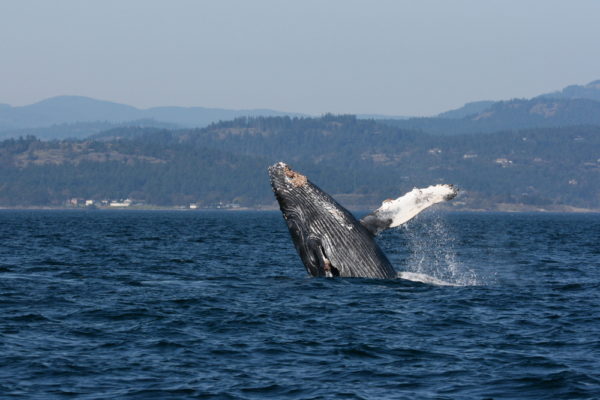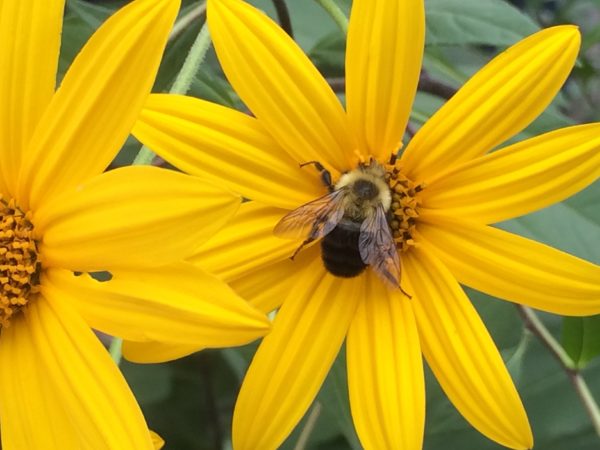Happy trails: Canadians Go Wild for birds, bees and whales
By bringing thousands of Canadians closer to nature, World Wildlife Fund Canada’s Go Wild Community Grants program, presented by TELUS, are building a movement of passionate people who are stepping up to protect ecosystems and wildlife across the country. From pollinator and whale trails in British Columbia to hummingbird habitat restoration on Prince Edward Island, here are just a few of the species Go Wild projects are helping. (If you’re feeling inspired, submit your idea by Nov. 24, 2017 and you can Go Wild, too.)

-
Whales
Catching a glimpse of an orca or humpback whale up close is an incredible experience. But it’s all too easy to forget the impact our presence can have on these majestic creatures and their habitats.
To reduce disturbances to whales in B.C.’s coastal waters, Ocean Wise is expanding the Whale Trail even further north. A land-based whale-watching network that stretches from California to B.C. with sites located in places known for shore sightings, the Whale Trail offers a non-intrusive alternative for thousands of whale watchers to appreciate wildlife and contribute to citizen science research by reporting sightings to the B.C. Cetacean Sightings Network.
With help from a Go Wild Community Grant, five new locations were added this year in Bamfield, Bowen Island, Mayne Island, Tofino and Squamish for a total of 12 along the coast.

2. Bees
The Okanagan region of B.C. is known for its wineries, fruit orchards and, thanks to the University of British Columbia’s Border Free Bees project and support from Go Wild, a 7.4 kilometre nectar trail in Kelowna.
To help native bee species recover, Border Free Bees recruited more than 100 homes, schools, churches and businesses along the route to transform a patch of their property into wildflower habitat. Spaced closely together, the gardens are improving habitat connectivity and allow bees to move sequentially from one blooming flower to the next.

It’s having an impact. By contributing to greater awareness about the plight of wild pollinators and the ways in which our own backyards and green spaces can benefit nature, pollinator trails are now taking shape in a neighbouring community and at UBC’s campus.
3. Hummingbirds
Known for glittery emerald, golden-green and red hues, the ruby-throated hummingbird is the only species of hummingbird that breeds in Canada. Faithfully, it returns from Central America every spring to nest. In 2016, Prince Edward Island birders reported fewer of these common backyard visitors.
With help from a Go Wild Community Grant, Island Nature Trust enlisted and trained more than two dozen citizen scientists to collect baseline data on the province’s hummingbird population size, migration and breeding patterns, to help scientists spot declines and threats sooner. Volunteers also planted native trees, shrubs and flowers to enhance habitat and attract hummingbirds. Together, these efforts will help ensure the ruby-throated hummingbird doesn’t reach the at-risk point.

You can Go Wild, too.
By harnessing the conservation power of people like you, we can help stop – and even reverse – the decline of wildlife. If you have an idea to help protect nature, we want to hear it. Submit your application by 5 p.m. ET on Nov. 24, 2017 and you could be granted up to $7,000 to bring your idea to life.
